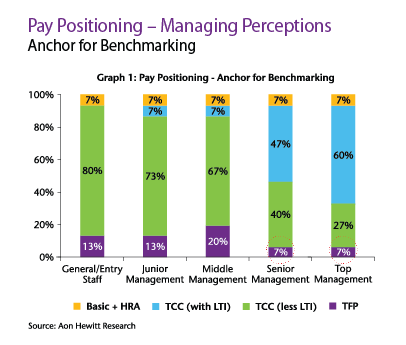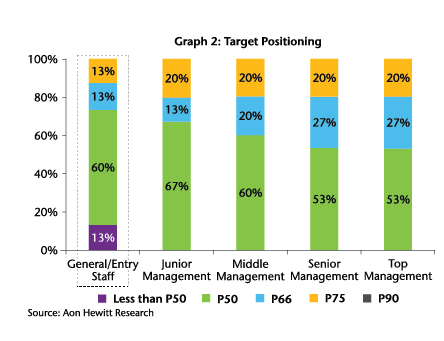FMCG Sector: Steady, Stable and Spot-on

Gurdit Singh Sachdeva
Senior Consultant,
Aon Hewitt

Puja Pradhan
Consultant,
Aon Hewitt
The FMCG sector has historically been seen as an
evergreen sector in India, with consistently strong
business performance, stability and growth even during
trying times. While it's fair to say that FMCG growth over
the last two years has been mildly disappointing, this is
still a sector that is widely viewed as an employer of
choice, with organizations frequently at the cutting
edge of HR/talent practices. This is supported by the
fact that the FMCG sector has had lower attrition
(13.6% in 2014 and 13.3% in 2013) as compared to the
average attrition for India Inc. (18.1% in 2014 and 18.5%
in 2013)
Stability and soundness of HR strategy seems to have
helped the sector retain its sheen on most fronts.
It is, therefore, not inaccurate to say that FMCG companies
seem to have done something right in terms of their talent/
rewards philosophy. Hence, is there something that other
sectors and industries could learn from the FMCG sector
on these fronts? That is what we have set out to decipher.
This article examines the 4 P's of the rewards philosophy
of leading FMCG organizations:
-
Pay Positioning
-
Pay Structure
-
Performance and Potential
-
Pay Communication

Total Cost to Company (TCC) is crucial for budgeting
and cost projections as it depicts the total cost incurred
towards an employee. However, salary negotiations,
matching and comparisons while hiring (or losing talent)
in general happen on Total Fixed Pay (TFP) or in some
cases, the "take home” salary. It is interesting, therefore,
to note that most companies use TCC as the anchor to
benchmark their pay positioning in the market instead
of TFP. Naturally, we see that overall cost inclusive of LTI
becomes an important consideration at higher levels.
This implies that organizations are not only
targeting to be competitive on total cost, but also
represents that organizations are better communicating
their overall rewards package, thus ensuring that
conversations around salary negotiations and annual
increments factor all components of pay into account.
Target Positioning
In a sector that is known for its war for talent,
organizations would need to be perceived as good
paymasters. It therefore, is no surprise that a significant
number of organizations target a positioning
above median. Additionally, instead of targeting
a uniform peg point, organizations differentiate
target positioning basis various factors, such as:

Levels of Management: At senior levels of management,
target positioning increases with more organizations
targeting a higher percentile point at higher levels of
hierarchy. This can be explained by the argument that
the impact of replacing an incumbent at senior levels is
higher and therefore, organizations position themselves
aggressively at these levels to reduce attrition.
At the entry level, most organizations are content
to be at the median of the market. This is due to the
abundance of talent and considerable investment
made by organizations to make new hires job-ready
at these levels. 13% organizations are even content to
position themselves lower than the market median.
High Performers and Critical Talent: 40% of
the organizations surveyed have differential
positioning for top performers and critical talent.
These organizations not only give a higher payout
Most companies use TCC as the
anchor to benchmark their pay
positioning in the market instead
of TFP
|